Laws and Ethics in Public Health: Medicare History, Policy Analysis
VerifiedAdded on 2022/10/01
|5
|720
|20
Report
AI Summary
This report delves into the history and evolution of Medicare, a pivotal health insurance program in the United States. It begins with the proposal by Harry Truman and traces the legislative journey, highlighting key figures like President Johnson and the factors that shaped its implementation in 1965. The report then examines the policy-making process, including agenda building, formulation, adoption, implementation, evaluation, and termination phases. Furthermore, it analyzes Medicare's significant impact on the American hospital system, its financial implications, and demographic shifts in patient populations. The report concludes by emphasizing Medicare's role as a major health expenditure and its contribution to transforming healthcare in the United States.
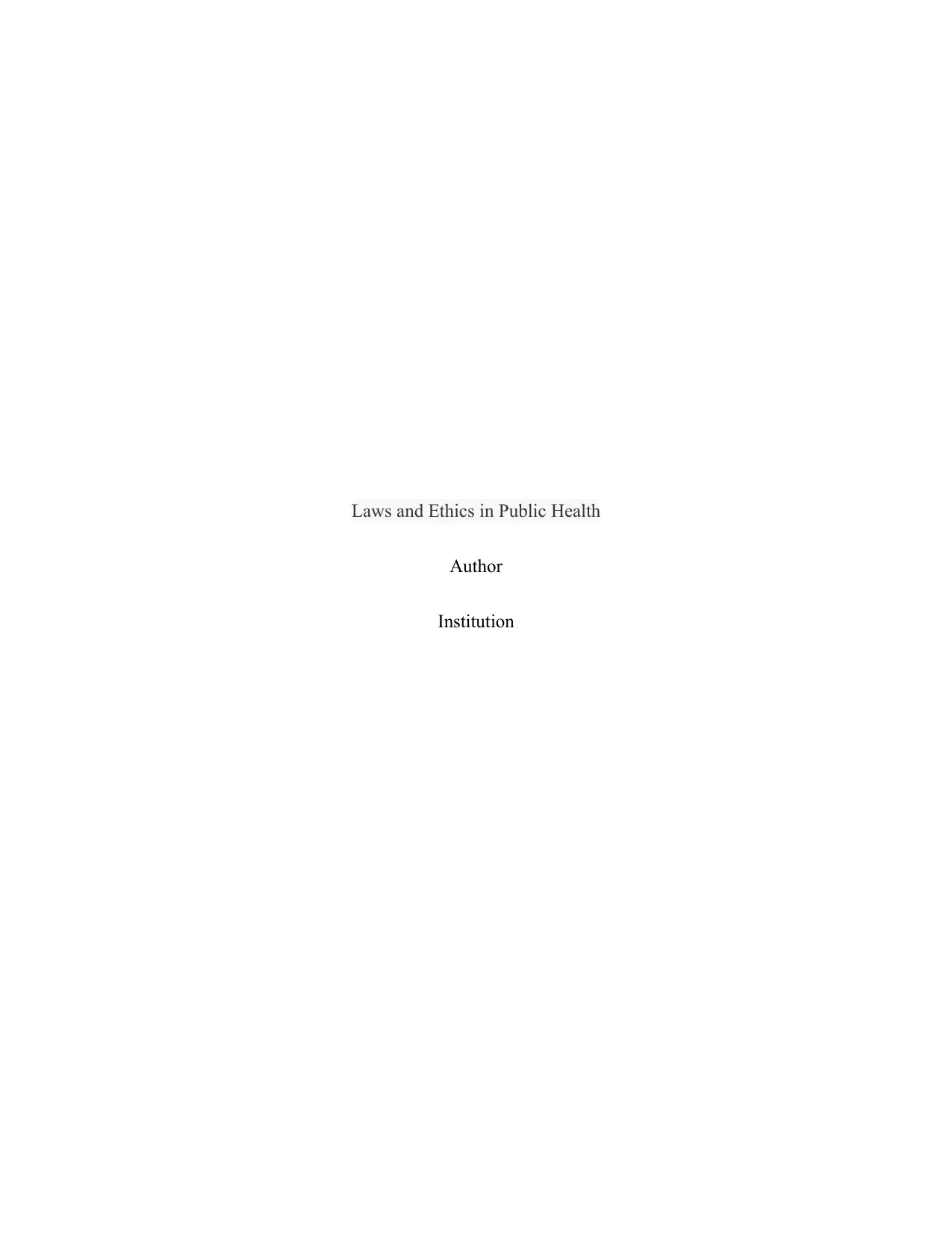
Laws and Ethics in Public Health
Author
Institution
Author
Institution
Paraphrase This Document
Need a fresh take? Get an instant paraphrase of this document with our AI Paraphraser
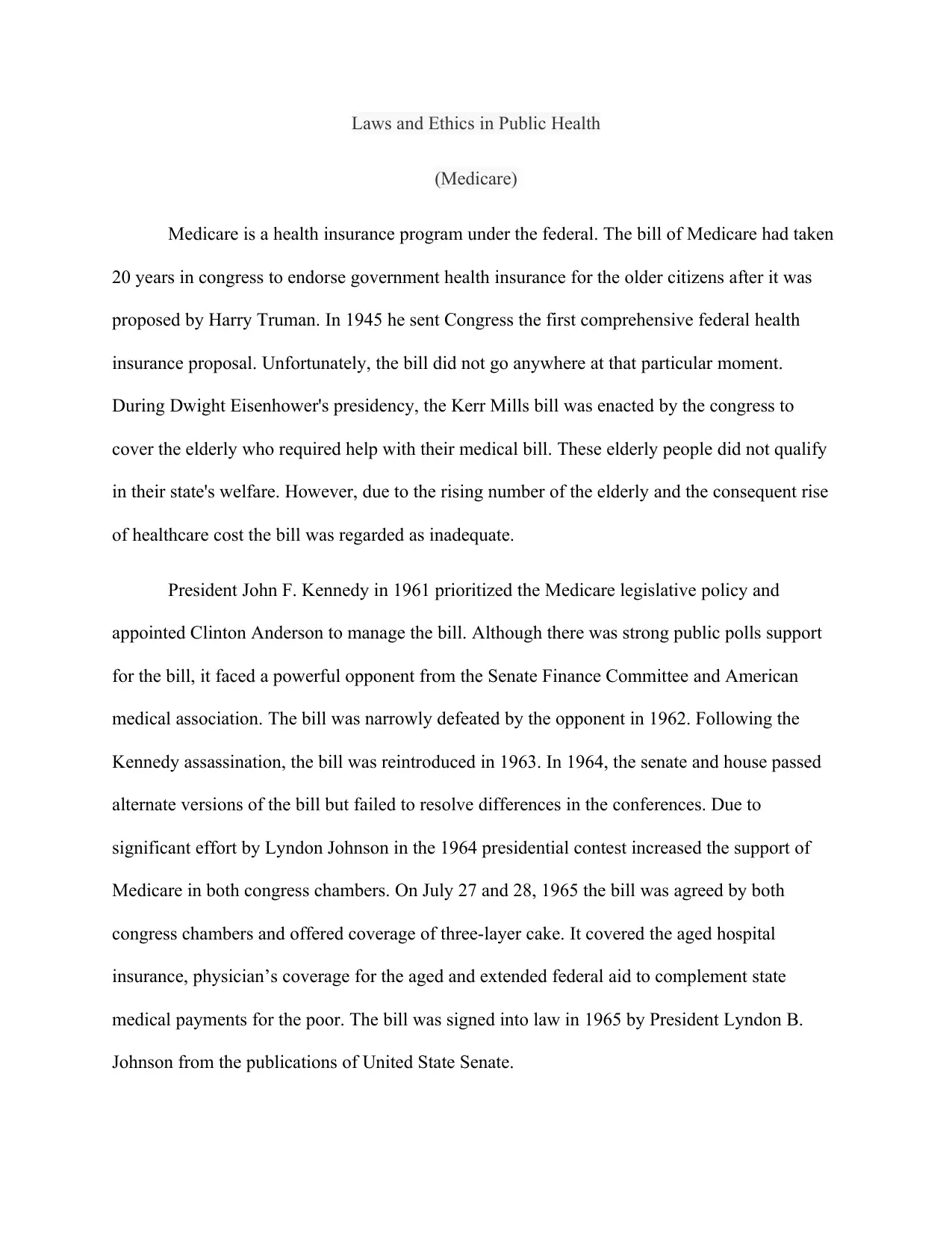
Laws and Ethics in Public Health
(Medicare)
Medicare is a health insurance program under the federal. The bill of Medicare had taken
20 years in congress to endorse government health insurance for the older citizens after it was
proposed by Harry Truman. In 1945 he sent Congress the first comprehensive federal health
insurance proposal. Unfortunately, the bill did not go anywhere at that particular moment.
During Dwight Eisenhower's presidency, the Kerr Mills bill was enacted by the congress to
cover the elderly who required help with their medical bill. These elderly people did not qualify
in their state's welfare. However, due to the rising number of the elderly and the consequent rise
of healthcare cost the bill was regarded as inadequate.
President John F. Kennedy in 1961 prioritized the Medicare legislative policy and
appointed Clinton Anderson to manage the bill. Although there was strong public polls support
for the bill, it faced a powerful opponent from the Senate Finance Committee and American
medical association. The bill was narrowly defeated by the opponent in 1962. Following the
Kennedy assassination, the bill was reintroduced in 1963. In 1964, the senate and house passed
alternate versions of the bill but failed to resolve differences in the conferences. Due to
significant effort by Lyndon Johnson in the 1964 presidential contest increased the support of
Medicare in both congress chambers. On July 27 and 28, 1965 the bill was agreed by both
congress chambers and offered coverage of three-layer cake. It covered the aged hospital
insurance, physician’s coverage for the aged and extended federal aid to complement state
medical payments for the poor. The bill was signed into law in 1965 by President Lyndon B.
Johnson from the publications of United State Senate.
(Medicare)
Medicare is a health insurance program under the federal. The bill of Medicare had taken
20 years in congress to endorse government health insurance for the older citizens after it was
proposed by Harry Truman. In 1945 he sent Congress the first comprehensive federal health
insurance proposal. Unfortunately, the bill did not go anywhere at that particular moment.
During Dwight Eisenhower's presidency, the Kerr Mills bill was enacted by the congress to
cover the elderly who required help with their medical bill. These elderly people did not qualify
in their state's welfare. However, due to the rising number of the elderly and the consequent rise
of healthcare cost the bill was regarded as inadequate.
President John F. Kennedy in 1961 prioritized the Medicare legislative policy and
appointed Clinton Anderson to manage the bill. Although there was strong public polls support
for the bill, it faced a powerful opponent from the Senate Finance Committee and American
medical association. The bill was narrowly defeated by the opponent in 1962. Following the
Kennedy assassination, the bill was reintroduced in 1963. In 1964, the senate and house passed
alternate versions of the bill but failed to resolve differences in the conferences. Due to
significant effort by Lyndon Johnson in the 1964 presidential contest increased the support of
Medicare in both congress chambers. On July 27 and 28, 1965 the bill was agreed by both
congress chambers and offered coverage of three-layer cake. It covered the aged hospital
insurance, physician’s coverage for the aged and extended federal aid to complement state
medical payments for the poor. The bill was signed into law in 1965 by President Lyndon B.
Johnson from the publications of United State Senate.
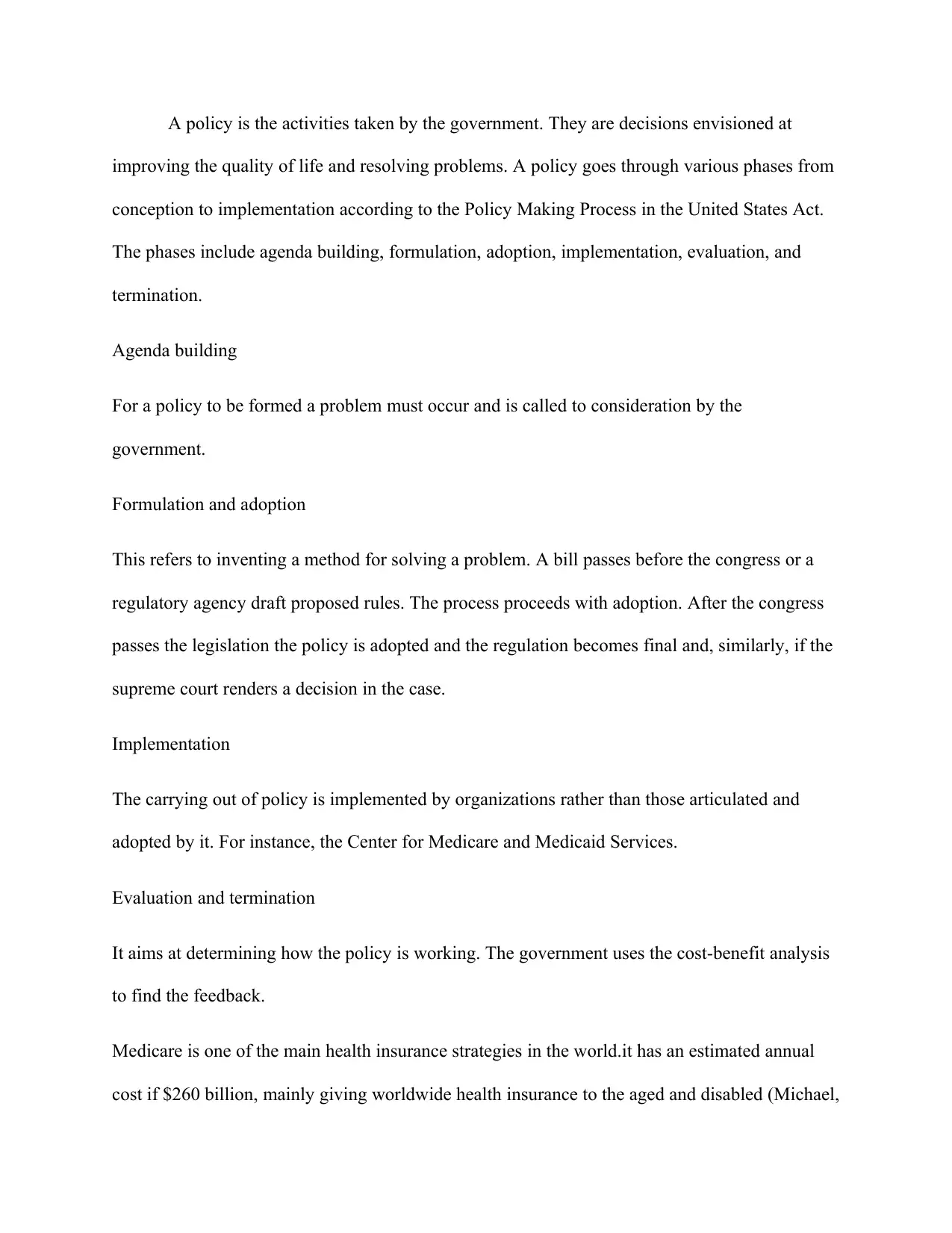
A policy is the activities taken by the government. They are decisions envisioned at
improving the quality of life and resolving problems. A policy goes through various phases from
conception to implementation according to the Policy Making Process in the United States Act.
The phases include agenda building, formulation, adoption, implementation, evaluation, and
termination.
Agenda building
For a policy to be formed a problem must occur and is called to consideration by the
government.
Formulation and adoption
This refers to inventing a method for solving a problem. A bill passes before the congress or a
regulatory agency draft proposed rules. The process proceeds with adoption. After the congress
passes the legislation the policy is adopted and the regulation becomes final and, similarly, if the
supreme court renders a decision in the case.
Implementation
The carrying out of policy is implemented by organizations rather than those articulated and
adopted by it. For instance, the Center for Medicare and Medicaid Services.
Evaluation and termination
It aims at determining how the policy is working. The government uses the cost-benefit analysis
to find the feedback.
Medicare is one of the main health insurance strategies in the world.it has an estimated annual
cost if $260 billion, mainly giving worldwide health insurance to the aged and disabled (Michael,
improving the quality of life and resolving problems. A policy goes through various phases from
conception to implementation according to the Policy Making Process in the United States Act.
The phases include agenda building, formulation, adoption, implementation, evaluation, and
termination.
Agenda building
For a policy to be formed a problem must occur and is called to consideration by the
government.
Formulation and adoption
This refers to inventing a method for solving a problem. A bill passes before the congress or a
regulatory agency draft proposed rules. The process proceeds with adoption. After the congress
passes the legislation the policy is adopted and the regulation becomes final and, similarly, if the
supreme court renders a decision in the case.
Implementation
The carrying out of policy is implemented by organizations rather than those articulated and
adopted by it. For instance, the Center for Medicare and Medicaid Services.
Evaluation and termination
It aims at determining how the policy is working. The government uses the cost-benefit analysis
to find the feedback.
Medicare is one of the main health insurance strategies in the world.it has an estimated annual
cost if $260 billion, mainly giving worldwide health insurance to the aged and disabled (Michael,
⊘ This is a preview!⊘
Do you want full access?
Subscribe today to unlock all pages.

Trusted by 1+ million students worldwide
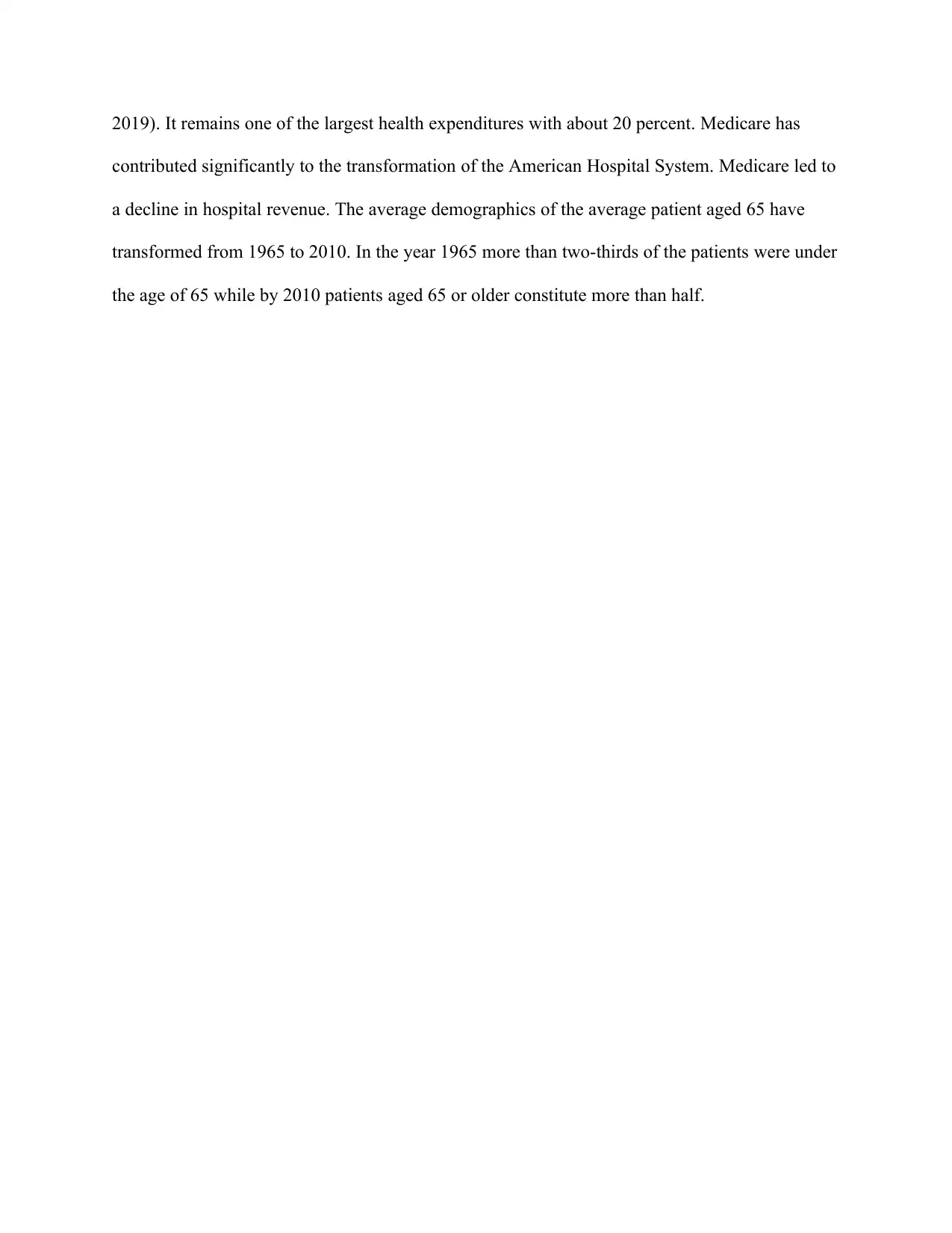
2019). It remains one of the largest health expenditures with about 20 percent. Medicare has
contributed significantly to the transformation of the American Hospital System. Medicare led to
a decline in hospital revenue. The average demographics of the average patient aged 65 have
transformed from 1965 to 2010. In the year 1965 more than two-thirds of the patients were under
the age of 65 while by 2010 patients aged 65 or older constitute more than half.
contributed significantly to the transformation of the American Hospital System. Medicare led to
a decline in hospital revenue. The average demographics of the average patient aged 65 have
transformed from 1965 to 2010. In the year 1965 more than two-thirds of the patients were under
the age of 65 while by 2010 patients aged 65 or older constitute more than half.
Paraphrase This Document
Need a fresh take? Get an instant paraphrase of this document with our AI Paraphraser
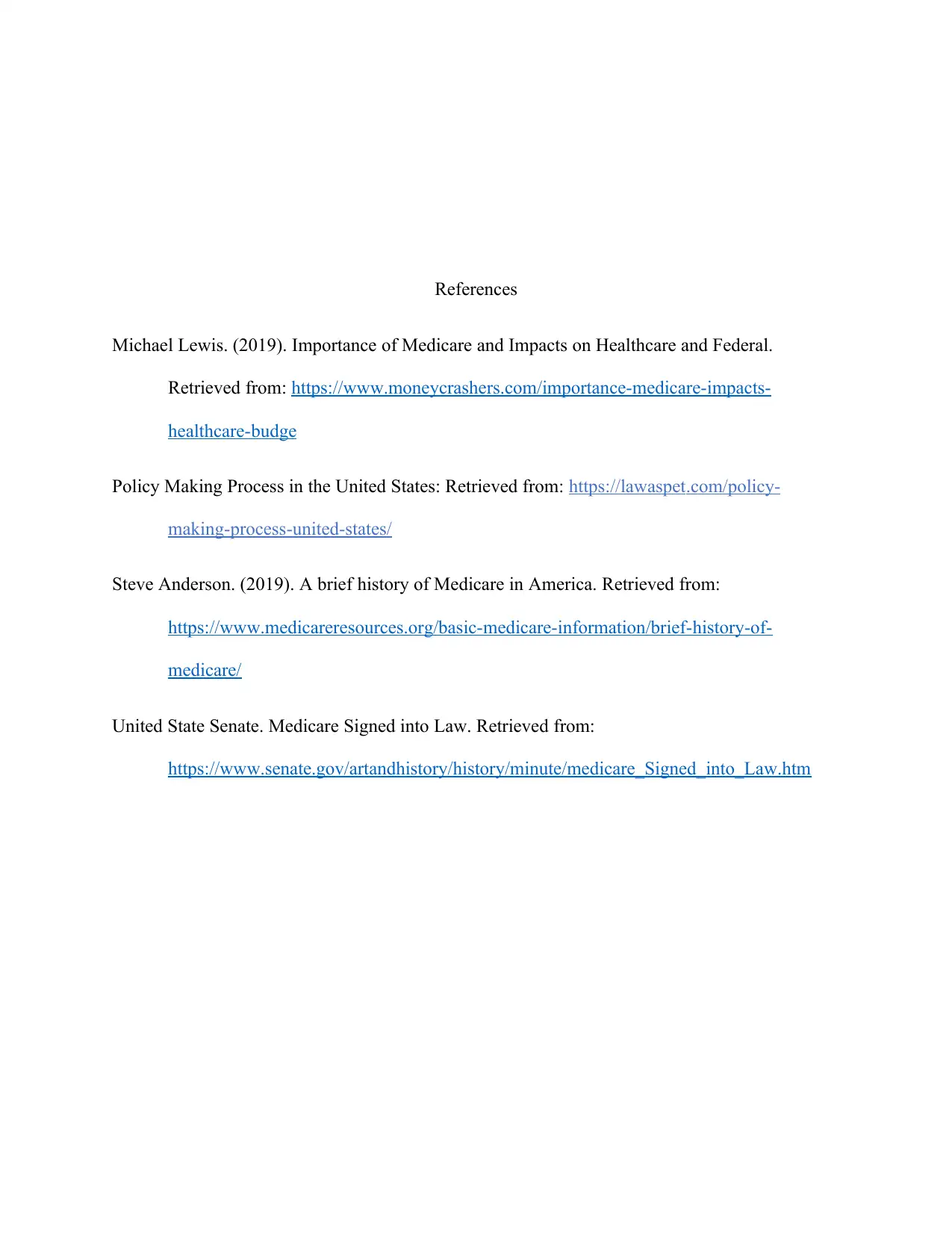
References
Michael Lewis. (2019). Importance of Medicare and Impacts on Healthcare and Federal.
Retrieved from: https://www.moneycrashers.com/importance-medicare-impacts-
healthcare-budge
Policy Making Process in the United States: Retrieved from: https://lawaspet.com/policy-
making-process-united-states/
Steve Anderson. (2019). A brief history of Medicare in America. Retrieved from:
https://www.medicareresources.org/basic-medicare-information/brief-history-of-
medicare/
United State Senate. Medicare Signed into Law. Retrieved from:
https://www.senate.gov/artandhistory/history/minute/medicare_Signed_into_Law.htm
Michael Lewis. (2019). Importance of Medicare and Impacts on Healthcare and Federal.
Retrieved from: https://www.moneycrashers.com/importance-medicare-impacts-
healthcare-budge
Policy Making Process in the United States: Retrieved from: https://lawaspet.com/policy-
making-process-united-states/
Steve Anderson. (2019). A brief history of Medicare in America. Retrieved from:
https://www.medicareresources.org/basic-medicare-information/brief-history-of-
medicare/
United State Senate. Medicare Signed into Law. Retrieved from:
https://www.senate.gov/artandhistory/history/minute/medicare_Signed_into_Law.htm
1 out of 5
Related Documents
Your All-in-One AI-Powered Toolkit for Academic Success.
+13062052269
info@desklib.com
Available 24*7 on WhatsApp / Email
![[object Object]](/_next/static/media/star-bottom.7253800d.svg)
Unlock your academic potential
Copyright © 2020–2025 A2Z Services. All Rights Reserved. Developed and managed by ZUCOL.





